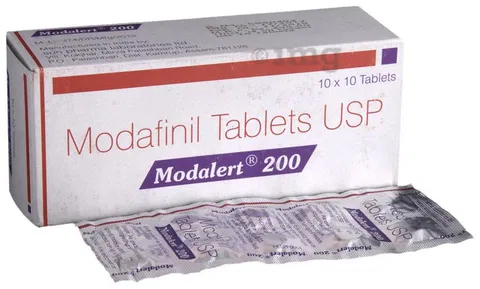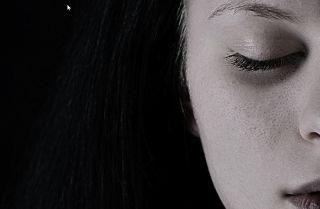INSOMNIA-
AI Identifies Depression as Highest Risk Factor for Insomnia.
CDC study uses AI machine learning and health records to predict insomnia risk.
Reviewed by Ekua Hagan
KEY POINTS-
AI machine learning can identify individual risk factors for insomnia based on health record data.
A machine learning model using fully anonymized data from over 7,900 patient records found depression to be the strongest predictor of insomnia.
Scientists say the greatest strength of this algorithmic method of research is the ability of AI to review a massive amount of data without bias.
The use of artificial intelligence (AI) machine learning for healthcare screening, medical diagnostics, and life sciences is an exciting growth area. A new peer-reviewed study published in the journal PLOS ONE demonstrates how AI machine learning can identify individual risk factors for insomnia based on health record data and found depression to be the strongest predictor.
“Machine learning models can effectively predict risk for a sleep disorder using demographic, laboratory, physical exam, and lifestyle covariates and identify key risk factors,” wrote Alexander A. Huang and Samuel Y. Huang, who co-authored the research by the National Health and Nutrition Examination Survey (NHANES). “Depression, age, weight, and waist circumference were the strongest predictors of sleep disorder."
The retrospective study used fully anonymized data from over 7,900 patient records from adult Americans, aged 18 years or older, from the National Health and Nutrition Examination Survey (NHANES), a major program of the National Center for Health Statistics (NCHS) which is part of the U.S. Centers for Disease Control and Prevention (CDC).
“The greatest strength of this algorithmic method for identification of the covariates is the ability to search through hundreds of covariates systematically without relying upon judgment from the researcher, which may be muddled by potential personal biases,” the scientists wrote.
Each NHANES database patient record had over 680 variables with information from physical exams, lab data, and self-reported questionnaires, including the Patient Health Questionnaire (PHQ-9) for depression, as well as diet, exercise, and demographic information.
The nine-question Patient Health Questionnaire (PHQ-9) incorporates DSM-IV diagnostic criteria (American Psychiatric Association, 1994) for major depressive disorder (MDD) symptoms into a self-reporting survey that is used for diagnosing, screening, and monitoring the severity of depression in adults. The PHQ-9 is from the longer Patient Health Questionnaire (PHQ) assessment. Both the PHQ and PHQ-9 were created in 1999 via an educational grant from Pfizer Inc. by Robert L. Spitzer, MD, Janet Williams, DSW, and Kurt Kroenke, MD, and their colleagues at Columbia University.
“We observed that increased PHQ-9 scores were strongly linked to the odds of a sleep disorder,” the researchers observed.
The researchers conducted the study using four types of AI machine learning algorithms: Artificial Neural Network (ANN), Random Forest (RF), Adaptive Boost (ADABoost), and XGBoost. Out of these four, XGBoost performed the best with the highest mean AUROC (Area under the receiver operator characteristic curve).
“Machine learning models can effectively predict risk for a sleep disorder using demographic, laboratory, physical exam, and lifestyle covariates and identify key risk factors,” the scientists concluded.
INSOMNIA-
AI Identifies Depression as Highest Risk Factor for Insomnia.
CDC study uses AI machine learning and health records to predict insomnia risk.
Reviewed by Ekua Hagan
KEY POINTS-
AI machine learning can identify individual risk factors for insomnia based on health record data.
A machine learning model using fully anonymized data from over 7,900 patient records found depression to be the strongest predictor of insomnia.
Scientists say the greatest strength of this algorithmic method of research is the ability of AI to review a massive amount of data without bias.
The use of artificial intelligence (AI) machine learning for healthcare screening, medical diagnostics, and life sciences is an exciting growth area. A new peer-reviewed study published in the journal PLOS ONE demonstrates how AI machine learning can identify individual risk factors for insomnia based on health record data and found depression to be the strongest predictor.
“Machine learning models can effectively predict risk for a sleep disorder using demographic, laboratory, physical exam, and lifestyle covariates and identify key risk factors,” wrote Alexander A. Huang and Samuel Y. Huang, who co-authored the research by the National Health and Nutrition Examination Survey (NHANES). “Depression, age, weight, and waist circumference were the strongest predictors of sleep disorder."
The retrospective study used fully anonymized data from over 7,900 patient records from adult Americans, aged 18 years or older, from the National Health and Nutrition Examination Survey (NHANES), a major program of the National Center for Health Statistics (NCHS) which is part of the U.S. Centers for Disease Control and Prevention (CDC).
“The greatest strength of this algorithmic method for identification of the covariates is the ability to search through hundreds of covariates systematically without relying upon judgment from the researcher, which may be muddled by potential personal biases,” the scientists wrote.
Each NHANES database patient record had over 680 variables with information from physical exams, lab data, and self-reported questionnaires, including the Patient Health Questionnaire (PHQ-9) for depression, as well as diet, exercise, and demographic information.
The nine-question Patient Health Questionnaire (PHQ-9) incorporates DSM-IV diagnostic criteria (American Psychiatric Association, 1994) for major depressive disorder (MDD) symptoms into a self-reporting survey that is used for diagnosing, screening, and monitoring the severity of depression in adults. The PHQ-9 is from the longer Patient Health Questionnaire (PHQ) assessment. Both the PHQ and PHQ-9 were created in 1999 via an educational grant from Pfizer Inc. by Robert L. Spitzer, MD, Janet Williams, DSW, and Kurt Kroenke, MD, and their colleagues at Columbia University.
“We observed that increased PHQ-9 scores were strongly linked to the odds of a sleep disorder,” the researchers observed.
The researchers conducted the study using four types of AI machine learning algorithms: Artificial Neural Network (ANN), Random Forest (RF), Adaptive Boost (ADABoost), and XGBoost. Out of these four, XGBoost performed the best with the highest mean AUROC (Area under the receiver operator characteristic curve).
“Machine learning models can effectively predict risk for a sleep disorder using demographic, laboratory, physical exam, and lifestyle covariates and identify key risk factors,” the scientists concluded.





